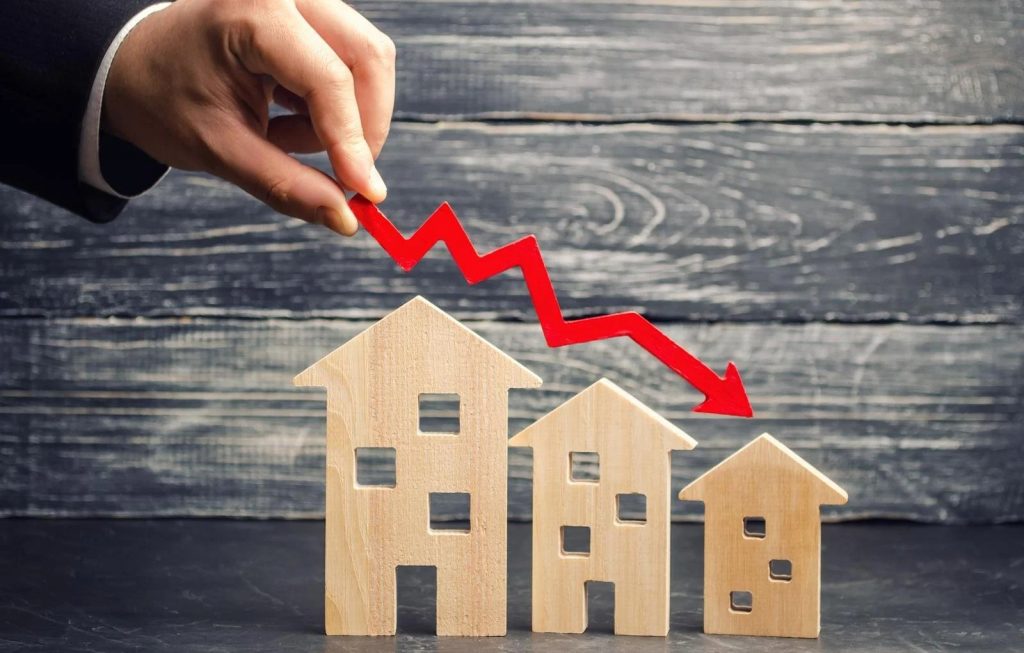New Zealand’s housing market downturn continues to roll on, with CoreLogic recording a 0.3% fall in January, the 10th consecutive month of decline

Residential property values are 7.2% lower than a year ago, the biggest 12-month decline since May 2009 (-7.9%), although still smaller than the ‘worst’ of the GFC when prices fell 9.7% in the year to March 2009.
CoreLogic NZ Chief Property Economist, Kelvin Davidson said it wasn’t a surprise to see property values generally fall further in January.
“Some green shoots of optimism had started to emerge in September and October last year on the back of a view that mortgage rates may have been at or close to a peak leading to some slightly stronger offers being made around that time,” Mr Davidson said.
“But then in November the Reserve Bank released its gloomy outlook for both the economy and inflation for 2023, which was always likely to impact property values in the following few months.
“Admittedly, we’re not seeing any real evidence yet that home owners are looking to ramp-up their selling activity – with unemployment still low, they can generally sit on the market for as long as it takes, or just de-list. But at the same time, buyers in a comfortable borrowing position still hold the balance of power when it comes to pricing, and this has clearly driven a further leg down for values in January.”
While it’s still too early to discern whether last month’s political changes have had any material impact on the property market, Mr Davidson said it seems unlikely they will, with more concern around the General Election on 14 October, and which party forms or leads the next Government.
“No doubt some existing and would-be property investors will be hoping for a National victory and a follow-through on their promise to reverse Labour’s Brightline and interest deductibility changes. But as the old cliché goes, there’s nothing guaranteed in politics,” he said.
Tauranga saw values inch up by 0.3% in the past three months. However, given wider pressures in the housing market, it’s too early to conclude that the downturn is over just yet. Christchurch’s average property value fell by 1.1% in January, but with the Garden City still relatively affordable, the decline over the past year has been less dramatic with values only 1% below the same time last year.
Dunedin and Wellington also recorded falls larger than the national average in January, however Dunedin is starting to show a bit more resilience, with values only having edged down by 0.3% since October. That said, they’re still 10% lower than January 2022.
Wellington continued to drop in the first month of 2023, although it wasn’t universal across the main sub-markets. Porirua rose by 0.9%, while Kapiti Coast’s decline was relatively small. On the flipside, Lower Hutt and Wellington City both dropped by about another 1%. Aggregated up, the wider Wellington area has seen values fall by 18.1% in the past year, with Upper Hutt at -21.6%.
Auckland’s minor 0.1% fall over the month reflected a ‘mixed bag’, with the City area rising by 0.8%, but Rodney, Waitakere, Papakura, and Franklin recording further steady declines. Despite a rise of 0.4% since October, Auckland City’s average values are still 7.2% lower than a year ago, with most other parts of the super-city down by between 8% and 10%.
CoreLogic House Price Index – Other Main Urban Areas (ordered by annual growth)
When analysing the markets outside the main centres, Mr Davidson re-iterated the slightly inconsistent nature of the changes – which is to be expected, given different local factors at any point in the cycle.
“Gisborne, Whanganui, New Plymouth, Queenstown and Invercargill all saw average property values rise in January, whereas Hastings fell 1.9% and Nelson’s decline wasn’t far short of the 1% mark,” he said.
“Some areas have also recorded an increase over the past three months, most notably Gisborne (2.3%) and Invercargill (1.4%), while only Palmerston North and Hastings have seen falls of more than about 1%.
“The variability is quite stark on the 12-month comparison, with Palmerston North, Hastings, and Napier all seeing declines of 10% or more, but Gisborne holding broadly flat, New Plymouth up by 2%, and Queenstown still resilient with an 8.3% rise. It’s clear that buyers are still being attracted to Queenstown and its surrounds, although as always, affordability has its limits.”
Mortgage rates remain key
Looking ahead, Mr Davidson said a peak-to-trough decline in average property values in the vicinity of 15-20% still remains a possibility, with the floor under the downswing potentially occurring in the second half of this year. However he warned there were risks in either direction.
“On one hand, there’s now a more compelling story saying that mortgage rates across most durations are at or close to a peak (except floating rates) – almost regardless of whether the Reserve Bank pushes up the official cash rate by 0.75% or 0.5% on 22 February,” he said.
“With net migration also picking up sharply, these factors argue for an earlier or shallower trough for house prices. It’s worth noting that the pace of decline has certainly been slower in the past few months.
“However, we’re also watching the labour market very closely, including the unemployment rate and wages from the final quarter of 2022. If these have started to show softer trends, it might not be too long before the labour market overtakes inflation as the biggest issue of concern for economy-watchers. And of course, any job losses over the coming months and quarters would tend to dent the prospects for the housing market.”
Mr Davidson added it’s also worth keeping a cautious eye on credit conditions, even if mortgage rates have genuinely peaked.
“They’re still high, and this presents issues for new borrowers, as well as existing borrowers who are yet to reprice their loans off older/lower fixed mortgage rates. With recent Centrix data highlighting some more concerning developments for household finances and repayment arrears (including mortgages), it’s important to remember that the effects of previous mortgage rate increases are yet to play out fully in the housing market.”






